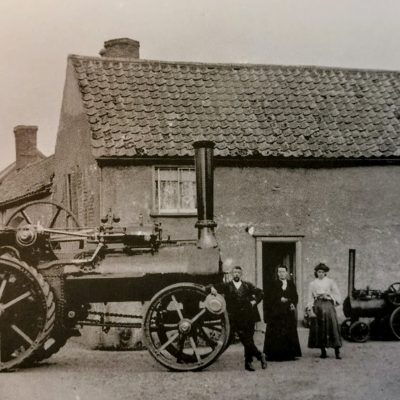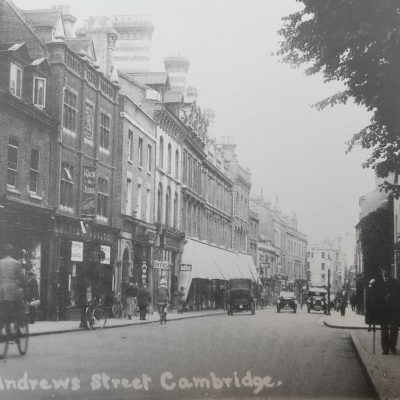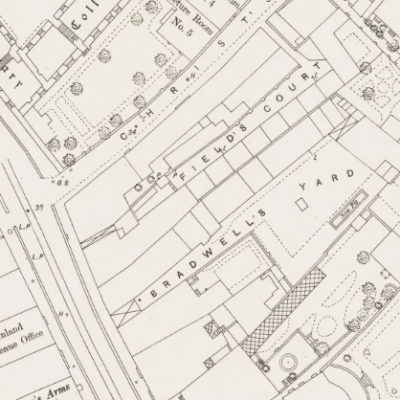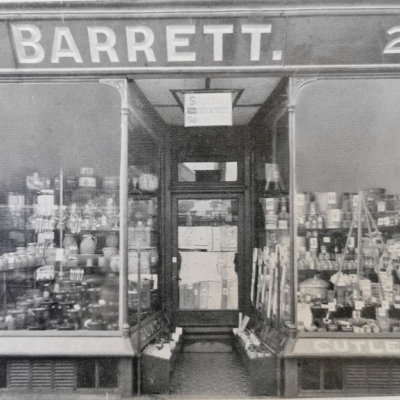Search by topic
- archaeology
- Building of Local Interest
- charity
- church
- crime
- dressmaker
- fire
- Great Eastern Railway
- Listed building
- Mapping Relief
- medieval
- oral history
- poverty
- Public House
- Rattee & Kett
- Religious House
- Roman
- scholar
- school
- Then and Now
- tudor
- women
- work
- world war one
- world war two
Search by text
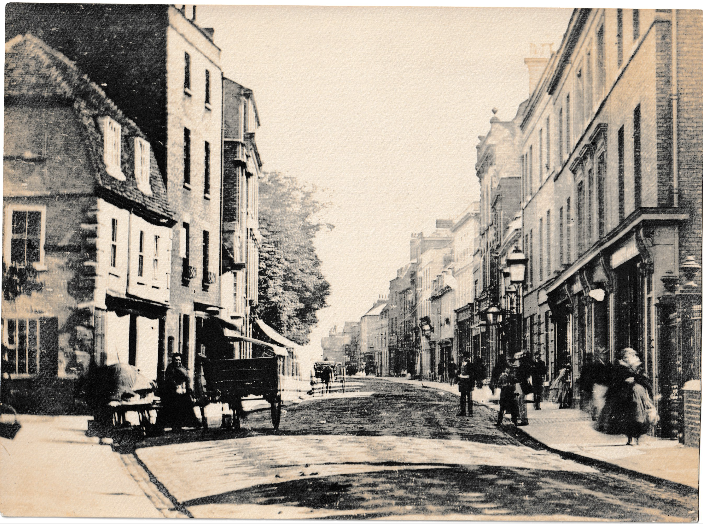 St Andrew's Street, c.1860 looking south (J Palmer Clarke)
St Andrew's Street, c.1860 looking south (J Palmer Clarke)69 St Andrew’s Street, The Wheat Sheaf
History of 69 St Andrew's Street
In 1635 this is described: ‘This is enclosed with a wall west of studds and clay and in the occupation of the widdow Roper or her assigns conteyning 49 yards’. (John Jellett’s Terrier)
The Grand Arcade excavation report (2019) contains the following commentary (p378):
Number 69 St Andrew’s Street was a reasonably substantial frontage property that faced onto St Andrew’s Street, behind which lay a narrow yard that was lined on its southern and eastern by 13 small tenements. This yard, which was known as Field’s Court, represented a formalization of the long-lived access route that was first identified in Area 11 during the early fifteenth century. Field’s Court was first recorded documentarily in 1837. In 1851, it was occupied by 12 households with 50 occupants.
1861
Frederick Hills, 46, wine and spirit merchant, b Ely
1881 Public House Wheat Sheaf
Henry Moden , 29, brewer and licensed victualler, b Huntingdon
Elizabeth, 30, b Fen Drayton
Ada Peacock, daughter in law, 11, b Longstanton
Clara, daughter in law, 9, b Longstanton
Bertha K, daughter in law, 7, b Longstanton
Ernest William, son in law, 6, b Cambridge
Maud E, daughter, 3, b Cambridge
Eveline E, 1,Mary A Westnutt, servant, 19, b Caldecot
Elizabeth Moden had previously been married to Thomas who in 1871 kept the King William public house on the Huntingdon Road in Willingham [not Cambridge]. Thomas died in 1874 and Elizabeth married Henry Moden.
The Wheatsheaf closed in 1883 and then reopened at 3 Market Hill.
In 1891 the family were living at 4 East Road.
Contribute
Do you have any information about the people or places in this article? If so, then please let us know using the Contact page or by emailing capturingcambridge@
License
This work is licensed under CC BY-NC-SA 4.0





